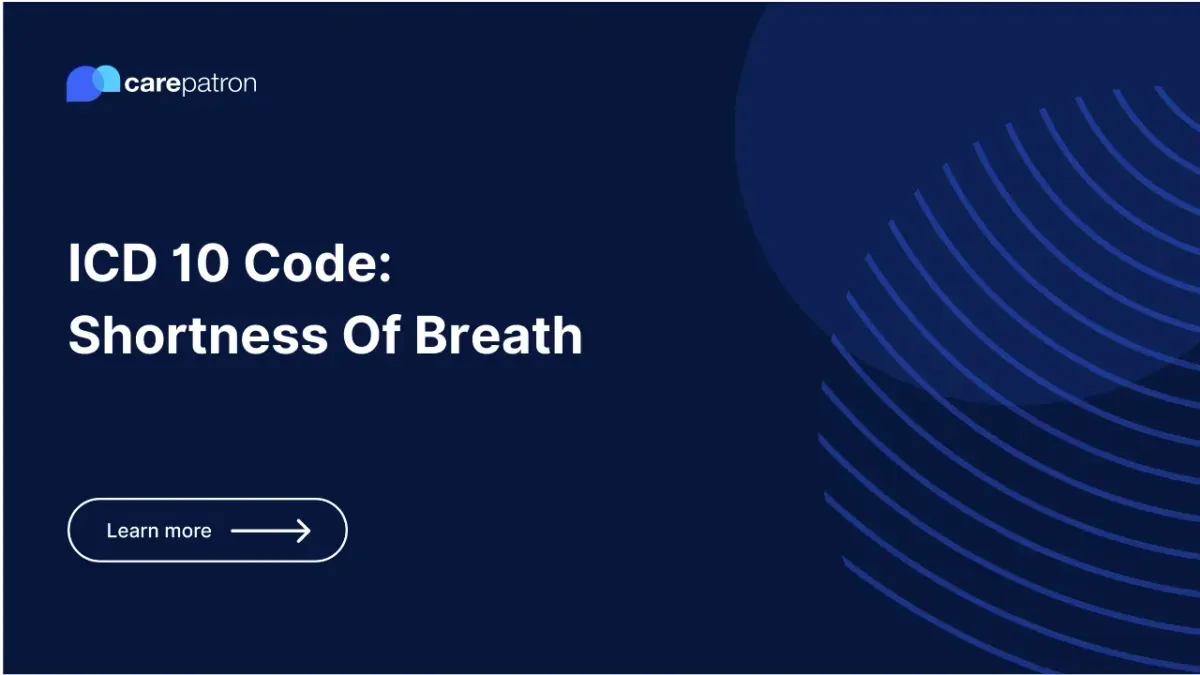
Shortness of Breath ICD-10-CM Codes | 2025
Learn about ICD-10 codes for shortness of breath that you can use, which are crucial for diagnosis, treatment planning, and billing in healthcare.
Use Code
Commonly asked questions
When a patient presents symptoms of difficulty breathing, an ICD code for shortness of breath should be used. These codes help accurately document the patient's condition and are crucial for diagnosis, treatment planning, and billing.
Yes, shortness of breath diagnoses are billable. Specific ICD-10 codes, such as R06.02 (shortness of breath), R06.00 (dyspnea, unspecified), and R06.01 (orthopnea), are used for billing purposes.
The treatments for shortness of breath vary depending on the cause. They can range from medication and respiratory therapies to lifestyle changes or surgical interventions. To provide appropriate treatment, a healthcare provider must determine the underlying cause of the shortness of breath.
EHR and practice management software
Get started for free
*No credit card required
Free
$0/usd
Unlimited clients
Telehealth
1GB of storage
Client portal text
Automated billing and online payments
